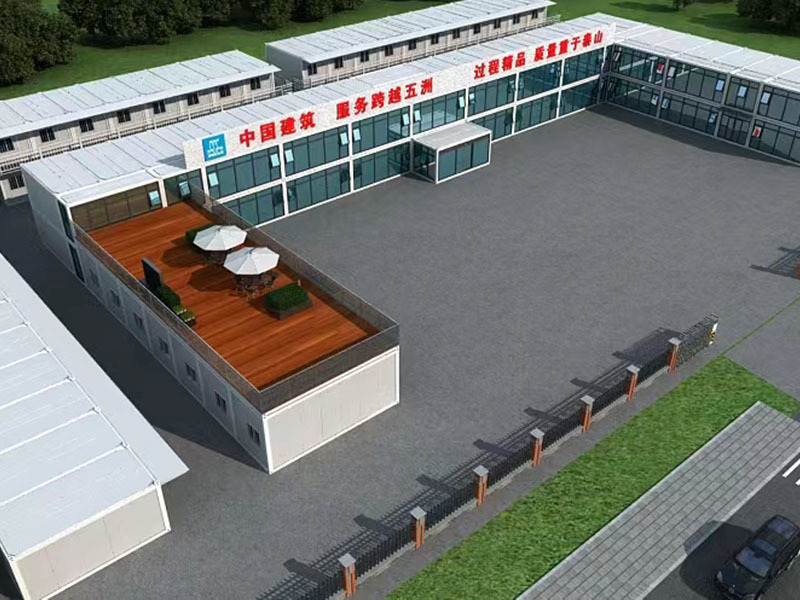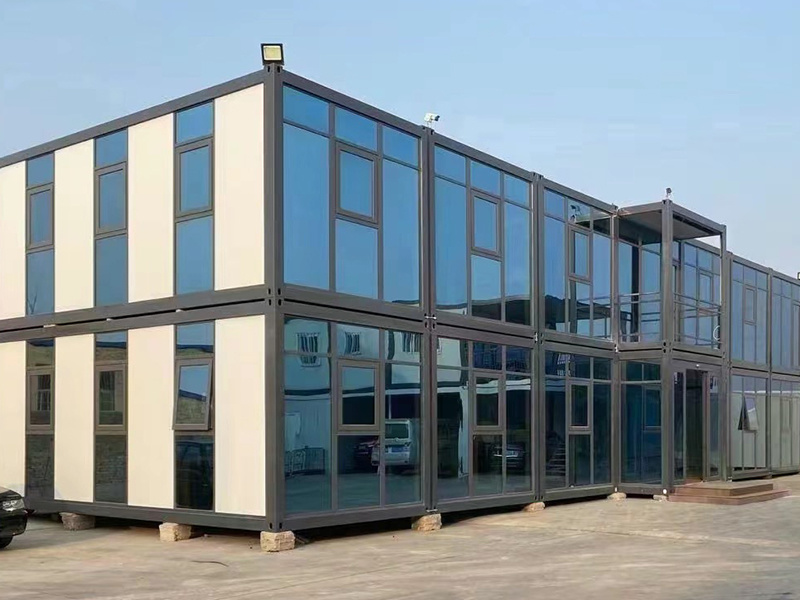Transforming Workspaces: The Benefits of Container Office Buildings
Release Time:
Jun 04,2025
Transforming Workspaces: The Benefits of Container Office Buildings Introduction to Container Office Buildings Container office buildings are emerging as a transformative solution for modern workspaces. These innovative structures, constructed from repurposed shipping containers, provide an exciting alternative to traditional office environments. As companies seek flexible, cost-effective, and
Transforming Workspaces: The Benefits of Container Office Buildings
Introduction to Container Office Buildings
Container office buildings are emerging as a transformative solution for modern workspaces. These innovative structures, constructed from repurposed shipping containers, provide an exciting alternative to traditional office environments. As companies seek flexible, cost-effective, and sustainable solutions for their workspaces, container offices stand out as a viable option.
This article explores the various advantages of container office buildings, their design possibilities, sustainability aspects, and the future of workspace transformation.
Understanding Container Office Buildings
Container office buildings are essentially prefabricated structures made from steel shipping containers. Originally designed for transporting goods, these containers have been creatively repurposed to serve as functional office spaces. Their inherent sturdiness, modular nature, and availability make them an appealing choice for businesses looking to innovate their work environments.
The Modularity of Container Offices
One of the most significant benefits of container offices is their modular design. This modularity allows businesses to customize their workspace according to specific needs, offering flexibility in layout and function. A company can easily expand its operations by adding more containers as needed, making it an ideal solution for growing businesses.
Cost-Effectiveness of Container Office Buildings
Container buildings offer a cost-effective alternative to traditional office spaces. The primary reasons for this affordability include:
- **Lower Construction Costs**: Utilizing existing containers reduces material costs and construction expenses.
- **Fast Construction Time**: Container offices can often be assembled and ready for use within weeks, significantly reducing downtime for businesses.
- **Reduced Site Preparation**: The need for extensive site preparation is minimized, further lowering costs.
Businesses seeking to create a professional workspace without breaking the bank find container offices to be an attractive option.
Enhancing Sustainability with Container Offices
Sustainability is a critical concern for companies today. Container office buildings provide numerous environmental benefits that align with eco-friendly practices.
Recycling and Repurposing Materials
By repurposing used shipping containers, businesses contribute to the reduction of waste in landfills. This recycling process is a key aspect of sustainable architecture, emphasizing the importance of reusing materials instead of relying on new production.
Energy Efficiency Features
Container offices can be designed with energy-efficient features, such as:
- **Insulation**: Proper insulation can help regulate temperature, reducing energy consumption for heating and cooling.
- **Solar Power**: Many container offices can be equipped with solar panels, promoting renewable energy use and decreasing reliance on non-renewable sources.
- **Natural Lighting**: Large windows and open designs allow for ample natural light, minimizing the need for artificial lighting during daylight hours.
Choosing container offices enables companies to showcase their commitment to sustainability while enjoying reduced operational costs.
Design Opportunities in Container Office Buildings
Container office buildings offer a unique canvas for architects and designers to explore creative solutions tailored to company culture and identity.
Customizable Layouts and Amenities
Container offices can be customized to meet various functional needs. Companies can create open-plan layouts for collaborative work or individual offices for privacy. Additionally, amenities such as break rooms, meeting spaces, and reception areas can all be integrated into the design.
Aesthetic Appeal
The industrial aesthetic of container buildings appeals to many modern businesses seeking a fresh and unique workspace. By combining containers with other materials, such as wood or glass, designers can create visually striking environments that inspire creativity and innovation.
Incorporating Landscaping
Container offices can seamlessly integrate landscaping features that enhance the overall ambiance. Rooftop gardens, outdoor decks, and green spaces can improve air quality and employee well-being, making the workspace more inviting.
Improving Employee Productivity with Container Offices
The design and layout of a workspace can significantly impact employee productivity. Container office buildings can be tailored to foster collaboration and creativity, leading to improved performance.
Creating Collaborative Spaces
Open layouts and communal areas encourage teamwork and interaction among employees. These spaces can be designed to facilitate brainstorming sessions, meetings, or casual conversations, contributing to a collaborative culture.
Personalization and Comfort
Employees appreciate personalizing their workspaces. Container offices allow for unique configurations and design choices, enabling individuals to create environments that reflect their style and preferences. Comfortable and personalized spaces lead to increased job satisfaction and productivity.
Case Studies: Successful Container Office Implementations
Numerous businesses have successfully implemented container office buildings, showcasing their versatility and benefits.
Startups Embracing Container Offices
Many tech startups have opted for container offices due to their affordability and modern aesthetic. For instance, a San Francisco-based tech company transformed shipping containers into a vibrant office space that fosters creativity and collaboration.
Educational Institutions Utilizing Container Buildings
Some schools and universities have embraced container office solutions to create classrooms and administrative spaces. These institutions highlight the flexibility of container buildings, adapting them to various educational needs and environments.
Challenges and Considerations for Container Office Projects
While container office buildings offer several advantages, there are also challenges to consider when embarking on such projects.
Zoning and Building Regulations
Before constructing a container office, it’s essential to consult local zoning and building regulations. Each municipality may have different requirements for the use of shipping containers in commercial applications. Navigating these regulations can be a challenge that developers must address.
Insulation and Climate Control
Proper insulation is crucial for maintaining comfortable temperatures within container offices. Companies must invest in quality insulation materials and climate control systems to ensure a pleasant working environment year-round.
The Future of Container Office Buildings
As the demand for flexible and sustainable workspaces continues to grow, container office buildings are poised to play a significant role in the future of commercial architecture.
Innovations in Container Design
Architects and designers are continuously exploring innovative design ideas for container offices. Future developments may include advanced technologies for energy efficiency, modular designs, and smart office features.
Expanding Market Adoption
With a growing awareness of sustainability and cost-effectiveness, more companies across various industries are likely to adopt container offices in the coming years. This trend will lead to increased acceptance of unconventional workspaces and drive further innovation.
Frequently Asked Questions (FAQs)
1. What are the primary benefits of container office buildings?
Container office buildings offer benefits such as cost-effectiveness, fast construction times, sustainability, and modularity, allowing for easy customization and expansion.
2. Are container offices suitable for all types of businesses?
Yes, container offices can accommodate various business types, from startups and tech companies to educational institutions and creative agencies. Their versatility makes them an attractive option for many sectors.
3. How do container offices contribute to sustainability?
Container offices promote sustainability by repurposing existing materials, reducing waste, and incorporating energy-efficient features like solar panels and proper insulation.
4. Are there challenges associated with building container offices?
Challenges may include navigating zoning and building regulations, ensuring proper insulation and climate control, and addressing potential structural concerns.
5. What design features can be incorporated into container offices?
Container offices can include customizable layouts, communal spaces, natural lighting, landscaping elements, and aesthetic enhancements, allowing for creative and functional work environments.
Conclusion
Container office buildings are transforming the way we think about workspaces. Their unique combination of affordability, sustainability, and design flexibility makes them an ideal choice for modern businesses seeking innovative solutions. As companies increasingly prioritize environmental responsibility and employee well-being, the adoption of container offices is likely to rise. By embracing this trend, businesses can not only create inspiring work environments but also contribute to a more sustainable future.
Key words:
What Else Might You Learn?










